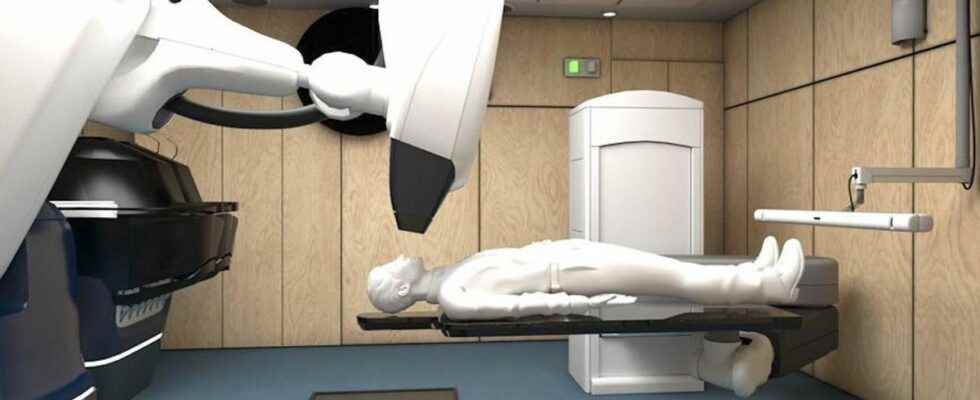Posted ,
Reading 2 mins.
To familiarize patients with high-precision radiotherapy sessions, the Hartman Institute has created a completely innovative process: a 3D, virtual and interactive simulator. A virtual reality headset allows you to prepare more serenely.
The CyberKnife® is a robotic stereotactic radiotherapy device. Very impressive, this device makes it possible to treat many difficult-to-access tumors with great precision while sparing the healthy tissues surrounding the tumour.
But for the patient, the machine is impressive and can cause real concern. Fear of the unknown, of the treatment, of the risks, of the side effects… To allow the patient to know what to expect during a session, the Hartman Institute has developed an astonishing virtual reality program – dubbed “Vorthex”.
A 3D innovation that revolutionizes the patient experience
Equipped with two CyberKnife®, the Hartman center is still innovating and offers patients the opportunity to virtually visit the room where their next radiotherapy session will take place.
The 100% interactive experience is intended to be “immersive and positive”. The main objective of the institute is to eliminate the main anxieties and fears of patients.
“We are writing the first chapter of a great story on improving the patient experience regarding the use of high technologies in robotic radiotherapy. This first digital twin of the Cyberknife is not only a technical feat, but it will revolutionize our relationship carer-cared for”can we read in the press release of the Institute.
The other interest of these 3D sessions? Allow patients to “better wait” for the start of their treatment. In other words, by making this period fun and informative.
“From an imposed and imposed waiting time, we create a positive experience of waiting; by making the patient an actor”specifies the Institute.
Getting ready with a virtual reality headset
This 3D simulation was made possible thanks to the expertise of Dassault Systèmes.
Consult an oncologist online
Radiotherapy is a method of treatment that consists of using ionizing radiation to treat all forms of cancer. There are several types (external, stereotaxic, metabolic, etc.).
The most common type of radiotherapy is the so-called “external” one. During a session, the rays emitted by the machine pass through the skin to destroy the tumour. The process, which lasts only a few minutes, is carried out on an outpatient basis (most often 1 time per day, 5 days per week for 2-5 weeks).
To maximize the effects, radiation therapy is often combined with surgery and/or chemotherapy.
Precision radiotherapy
In recent years, radiotherapy has undergone major developments, with the appearance of “high” and “very high” precision techniques.
In particular, precision radiotherapy has made its appearance. It no longer uses one or two beams of radiation, but many beams to better target the areas to be treated, with extreme precision.
The two main devices allowing such precision are the CyberKnife® and the Gamma Knife®.
